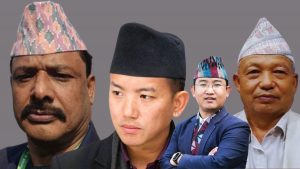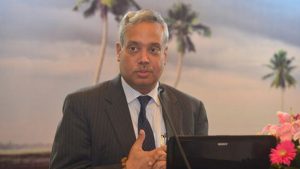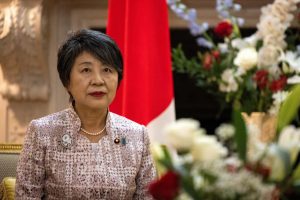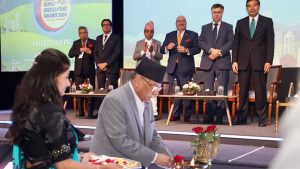
The Slow, Chaotic, and Bumpy Delivery of Federalism in Nepal
Progress Hindered by Challenges
Koshi province, one of Nepal’s seven provinces established following the adoption of a new Constitution in 2015, continues to grapple with governance issues. The new Constitution marked a significant shift in Nepal’s history, transforming the nation into a secular federal democratic republic and moving away from a constitutional monarchy and unitary form of governance.
Recent months have been marked by turmoil in Koshi province as the Supreme Court has had to intervene twice in the government formation process. The court has pointed out that constitutional provisions were undermined during the Chief Minister’s election, leaving the governance situation in limbo. The dispute remains unresolved, further hindering the establishment of a stable government in the province.
Nepal’s transition to federalism, as envisaged by the Constitution, has faced numerous challenges. The promise of the new Constitution being a solution to political, social, and economic issues has not been fully realized. Koshi’s situation is emblematic of broader challenges facing federalism implementation in Nepal.
Dr. Khim Lal Devkota, an expert in federalism and fiscal decentralization, expressed concerns about the slow progress in implementing federalism. Despite the three-tiered government structure established in 2017, the subsequent elections in 2022 failed to consolidate federalism effectively. Dr. Devkota cited several reasons for the poor implementation, raising doubts about whether Nepal can successfully transition to a fully functional federal system.
Federalism Debate: More on Paper, Less in Practice
The ongoing federalism debate in Nepal has been a topic of discussion for decades, but it gained significant momentum in 2006-07. Protests in the eastern Tarai plains, led by Madheshi parties, forced Nepal’s major political forces to seriously consider federalism as a viable governance model.
In 2007, the interim Constitution of Nepal officially adopted federalism. However, for nearly a decade after, the focus remained primarily on defining provincial boundaries rather than addressing the core issues of identity and administrative capacity.
Political analyst Tula Narayan Shah noted, “When the new Constitution was promulgated, the restructuring of the state based on identity and capacity was overlooked. The federalism dream did materialize, but not in the form it was envisioned.”
According to Shah, the faulty design of federalism was a significant stumbling block. “As it became merely a power-sharing tool, people failed to experience the true benefits of federalism—self-rule, improved service delivery, and development.”
Nepal’s political history also plays a crucial role in understanding the federalism debate. After the fall of the Rana regime in 1951, Nepal briefly enjoyed democracy until 1960, when King Mahendra staged a royal-military coup and introduced the unitary Panchayat system. Democracy was eventually restored in 1990, with constitutional monarchy. The Maoist insurgency from 1996 to 2006 paved the way for the abolition of the monarchy, and the 2007 Madhesh protests laid the foundation for federalism.
“In a diverse country like Nepal, transitioning from a unitary system to federalism should have meant the accommodation of diversity and self-rule,” said Mr. Shah. “However, the practical implementation has fallen short of these ideals. While federalism exists on paper in Nepal, its real-world impact remains limited.”
Roadblocks Persist
In 2017, Nepal took a significant step towards federalism by holding its first elections in accordance with the 2015 Constitution, establishing governments at three tiers: the federal government in Kathmandu, provincial governments in seven provinces, and local governments in municipalities. However, challenges have persisted, hindering the full realization of federalism.
Critics argue that politicians in Kathmandu have been reluctant to devolve power, maintaining a centralized mindset. While local governments were granted some authority, provincial governments have been kept in check, raising questions about the purpose of having provinces if they cannot exercise their authority effectively.
One pressing issue is the federal government’s delay in formulating essential umbrella laws required for provinces to function efficiently. This has had a direct impact on governance and service delivery, leaving the federal system incomplete.
Dr. Devkota, a member of the Upper House, characterizes the failure to enact necessary laws over the past eight years as a crime committed by central-level politicians against federalism. Without these laws, provinces cannot establish their own civil servants, police forces, or effectively mobilize budgets and resources.
Moreover, the frequent changes in provincial governments have posed a significant challenge to federalism’s stability. The first five years following the 2017 elections witnessed major political parties engaging in a game of musical chairs, undermining the dream of stability after decades of political transition.
Bimala Rai Poudyal, a PhD in Development Studies, highlights the impact of the coalition culture that permeates Kathmandu, which has also affected the provinces, hindering the implementation of federalism. While there have been challenges and dissatisfaction, she emphasizes that progress has been made, particularly in terms of women and marginalized groups gaining representation in decision-making at local and provincial levels.
Slow Progress, High Discontent
In Nepal, the vision of federalism was not just about creating different provinces but ensuring inclusion, equity, and an end to discrimination. However, eight years after the Constitution was fast-tracked, discontent is growing in the Madhesh region, where the seeds of federalism were sown.
Local journalist Nityanand Mandal in Janakpur, the capital of Madhesh Province, points out that major political parties have ignored the spirit of federalism in their power-sharing politics. Service delivery has not improved as expected, and the gap between the rich and the poor persists.
Observers note that the commitment to constitutional values like republicanism, secularism, and federalism seems lacking among the same parties that once championed them. The federal government’s reluctance to empower provinces has left the provincial governments with limited control over crucial aspects like the police force, law-making, and budgets.
In essence, federalism in Nepal appears to have been orphaned by those who once claimed to have birthed it. Dr. Poudyal acknowledges that political parties and a lack of ownership have hindered the full implementation of federalism, making it a slow work in progress.
The challenge remains to bridge the gap between the promise of federalism and its actual delivery to the people, particularly those who have long suffered under a unitary state.















Comments